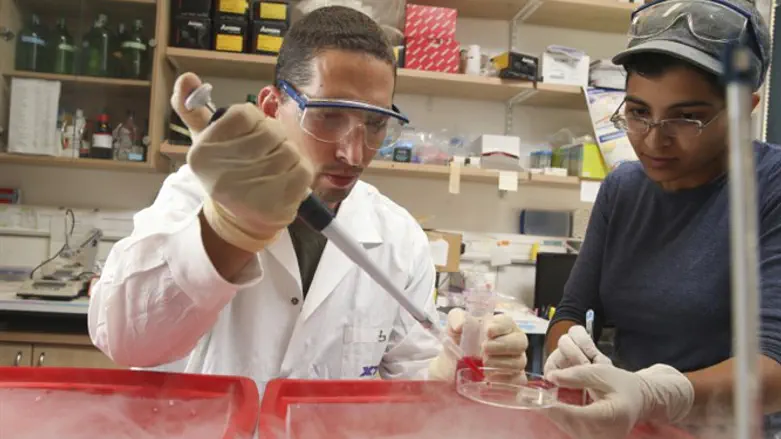
A new Israeli study published in the illustrious "Nature" magazine reveals how a melanoma metastasizes to other organs and becomes life-threatening.
Tel Aviv University researchers discovered the way in which a melanoma metastasizes and have also found ways to prevent the deadly skin cancer from spreading to other parts of the body.
Dr. Carmit Levy of the Human Genetics and Biochemisty Dept. at the Medical school in Tel Aviv University led the study. She explained to "Yediot Achronot" that "a melanoma begins on the external side of the skin, known as the epidermis."
Levy adds that at the first stage the growth cannot metastasize since there are no blood vessels in the epidermis and they are the "fast road' by which the cancerous cells spread to other parts of the body. "In order to metastasize, the tumor requires a connection to blood vessels and they are to be found in the dermis, the layer of skin under the epidermis."
"We discovered that, even before the cancer itself penetrates the dermis, it sends minuscule bubbles containing genetic information and they affect the changes in the texture of the dermis so that it can be capable of absorbing the cancerous cells and metastasizing. We realized that if we could somehow block these bubbles we could arrest the development of the disease."
The researchers succeeded in finding some chemicals which could intervene and stop the process in its initial stages. One such chemical stops the tumor from sending bubbles from the epidermis to the dermis, while another one stunts the development of changes in the dermis even after the bubbles reach it.
According to the report in "Yediot Achronot," the new insights, as well as the successful testing of the two chemicals, could serve as a basis for the development of medications which could prevent metastasis in melanoma cases. Additionally, the changes identified in the dermis, as well as the bubbles themselves, could serve as definitive signs which will enable early diagnosis and treatment of the fatal cancer.